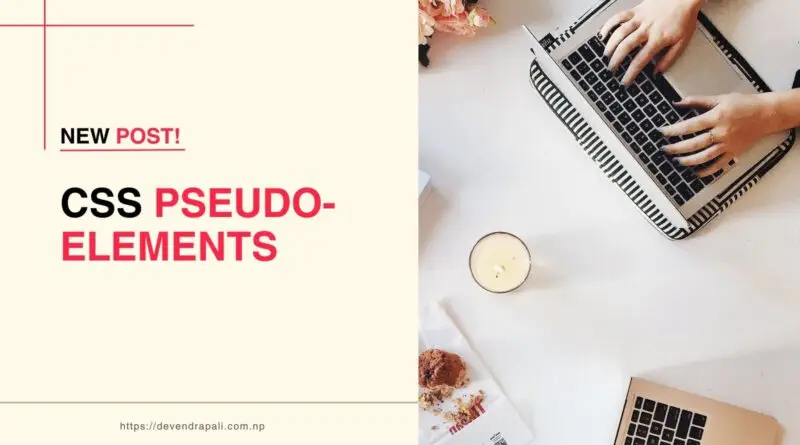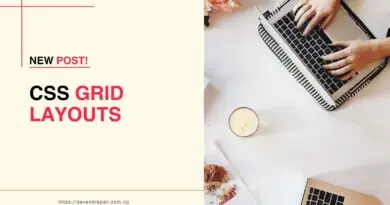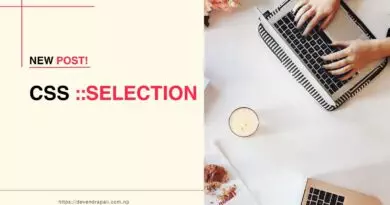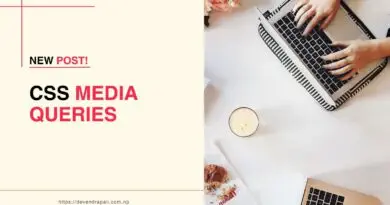CSS Pseudo-elements
CSS pseudo-elements are a tool in web development, allowing for the creation of dynamic and visually stunning designs without cluttering the HTML markup with unnecessary elements. In this extensive guide, we’ll explore the world of CSS pseudo-elements, including ::before, ::after, ::first-line, ::first-letter, and ::selection. We’ll delve into their syntax, practical applications, and provide multiple examples to showcase their versatility and creative potential in web development.
1. ::before and ::after Pseudo-elements
The ::before and ::after pseudo-elements allow developers to insert content before or after an element’s content, respectively. These pseudo-elements are commonly used to add decorative elements, create visual effects, or insert dynamic content without modifying the HTML structure.
Syntax:
selector::before {
/* CSS properties */
content: "content";
}
selector::after {
/* CSS properties */
content: "content";
}
Example 1: Adding Decorative Elements
button::before {
content: "🎉";
margin-right: 5px;
}
In this example, a celebratory emoji is added before the content of each button element, enhancing its visual appeal.
2. ::first-line Pseudo-element
The ::first-line pseudo-element allows developers to style the first line of text within an element separately from the rest of the content. This pseudo-element is useful for creating typographic effects or emphasizing specific text within a paragraph or heading.
Syntax:
selector::first-line {
/* CSS properties */
}
Example 2: Styling the First Line of a Paragraph
p::first-line {
font-weight: bold;
color: blue;
}
In this example, the first line of every paragraph will be displayed in bold and blue color, drawing attention to the beginning of each paragraph.
3. ::first-letter Pseudo-element
Similar to ::first-line, the ::first-letter pseudo-element allows developers to style the first letter of text within an element separately. This pseudo-element is commonly used for decorative drop caps or stylistic flourishes in typography.
Syntax:
selector::first-letter {
/* CSS properties */
}
Example 3: Creating Decorative Drop Caps
p::first-letter {
font-size: 2em;
color: red;
float: left;
margin-right: 5px;
}
In this example, the first letter of each paragraph will be displayed in a larger font size, red color, and floated to the left to create a decorative drop cap effect.
4. ::selection Pseudo-element
The ::selection pseudo-element allows developers to style the portion of text selected by the user using the mouse cursor. This pseudo-element is useful for customizing the appearance of selected text to match the overall design aesthetic of the website.
Syntax:
::selection {
/* CSS properties */
}
Example 4: Customizing Selected Text
::selection {
background-color: yellow;
color: black;
}
In this example, selected text on the webpage will have a yellow background color and black text color, providing a visually distinct appearance from the surrounding content.
Practical Applications
- Creating decorative elements and visual effects.
- Enhancing typography with customized first-line and first-letter styling.
- Customizing the appearance of selected text for improved user experience.
- Adding dynamic content or icons before or after elements without modifying the HTML structure.
Conclusion
CSS pseudo-elements offer a powerful and versatile toolset for enhancing the visual design and user experience of web pages. By leveraging pseudo-elements such as ::before, ::after, ::first-line, ::first-letter, and ::selection, developers can create dynamic and visually stunning designs with ease. Experiment with different styling techniques and creative applications to unlock the full potential of CSS pseudo-elements and take your web development projects to the next level. With the examples provided in this guide, you now have the knowledge and inspiration to incorporate CSS pseudo-elements into your designs and create captivating user experiences on the web.




